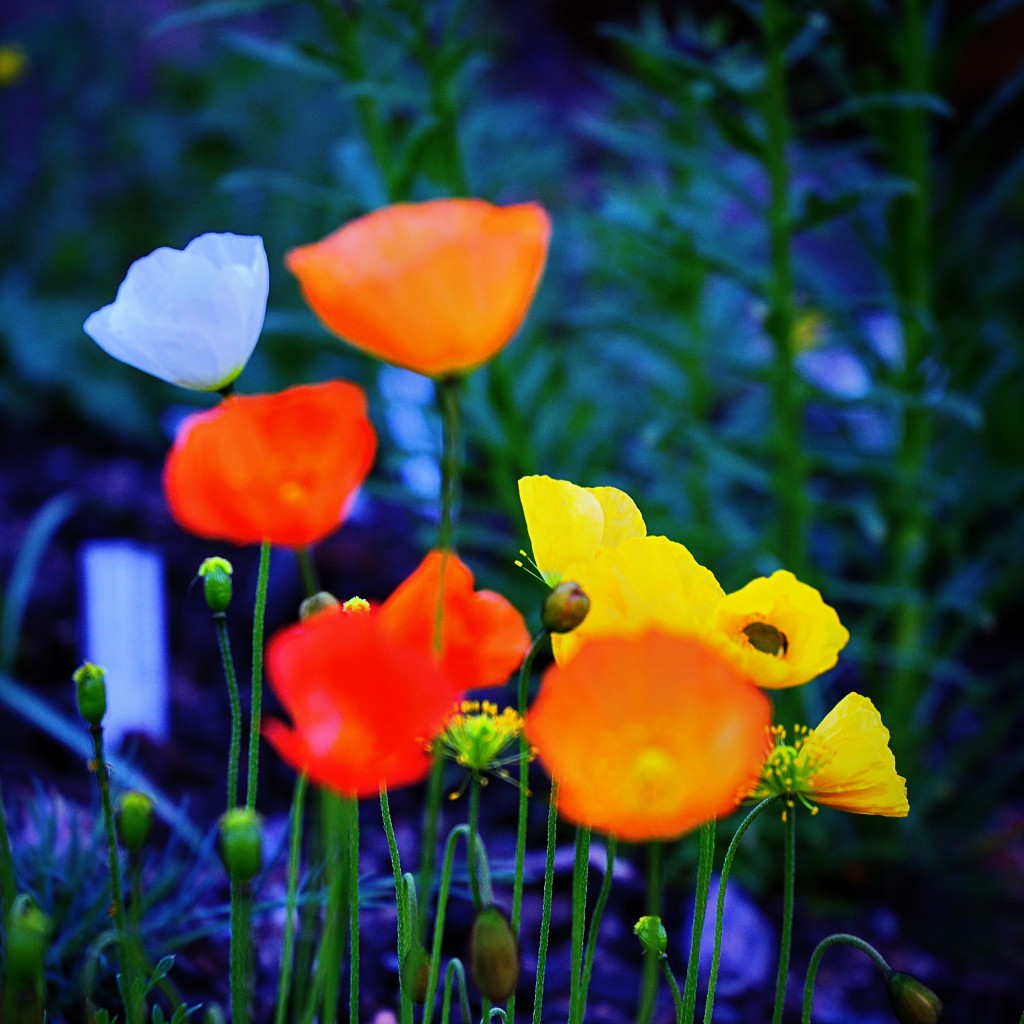
The Benefits of Living in the Present Moment
Photo Credit: Mikael Tigerstrom, via Flickr Creative Commons
“Welcome the present moment as if you had invited it. It is all we ever have, so we might as well work with it rather than struggling against it. We might as well make it our friend and teacher.”
-Pema Chodron, Start Where You Are
Our feelings and moods can be like the weather-constantly changing, often without warning. This is not as random as it seems. Feelings of confusion, disorientation and irritation are frequently the byproducts of an overloaded and wandering mind. Like a puppy whose attention is prey to endless distractions, our minds are seldom anchored and engaged in the present moment.
It is healthy to realize that nothing needs to happen for the present moment to feel complete
Given the myriad demands, obligations, hopes and dreams that we juggle every day, the tendency toward being mentally scattered is certainly understandable and forgivable. But if we are not more careful, these distracted moments can stretch into a frenetic and deeply unsatisfying way of life that can be both disheartening to our spirit and damaging to our health. When we feel scattered and stressed it is difficult to make positive lifestyle changes.
In order to increase our well-being, it’s helpful to harness our attention and focus on the present moment. This practice will help us to get back in touch with our wants and needs, our inner wisdom and sacred connections.
Tips for Better Living in the Moment
Focus on Practicing Deep Listening
“Listening is a magnetic and strange thing, a creative force.Think how the friends that really listen to us are the ones we move toward, and we want to sit in their radius as though it did us good, like ultraviolet rays.” -Brenda Ueland, Tell Me More
You can’t shake hands with a closed fist. Similarly, you cannot fully listen and be present to yourself or another with a closed, judgmental mind. Too often we listen superficially as we selectively get caught up in our attraction to or rejection of what is being said. Our judgments cloud our vision and distort what we are hearing. This holds true when we are listening to the longings of our own hearts and when we are listening to what another person is expressing to us. When we are too busy judging another, or ourselves, we abandon the present moment and its ability to allow us to see things as they actually are. (See Ornish Living article, The Health Benefits of Listening)
Deep listening involves a willingness and determination to pay attention on purpose. It involves an equal mix of concentration, devotion, generosity and respect. Deep listening conveys this message, “I am with you completely in this sacred moment that will not come again. You are important to me. I see you. I hear you.”
Simply put, deep listening is empathy in action. A helpful sequence to use to promote cooperative communication is this:
- Concentrate in each moment on listening without judgment to what is being said
- Acknowledge what you heard (even if you don’t agree with it) before sharing your point of view.
When we listen whole-heartedly first, we are then able to accurately and responsively acknowledge what was just said. In his book, Nonviolent Communication, Marshall Rosenberg wrote, “Studies in labor-management negotiations demonstrate that the time required to reach conflict resolution is cut in half when each negotiator agrees, before responding, to repeat what the previous speaker had said.”
This step of acknowledging does not imply approving or agreeing with the thoughts and feelings of another. It does, however, send an implicit message of willingness to work toward greater understanding.
Deep listening exponentially increases our chances of not just hearing with our ears, but also listening with our hearts. It is the gateway invitation to meeting each other with compassion in the present moment.
Focus on Making Time for Stillness
Because our culture places so much emphasis on accomplishments and progress, we often find it difficult to see any value at all in non-doing. Even our vacation time tends to be loaded with pervasive busyness and countless activities. Welcoming stillness involves consciously slowing down the body and mind sufficiently in order to focus on being versus doing. It is healthy to realize that nothing needs to happen for the present moment to feel complete. Embracing this understanding brings with it a level of self-acceptance and “enough-ness” that inoculates us with calm, compassion and centering.
It would be a mistake to confuse non-doing with doing nothing. Deep relaxation, for example, requires the focus, attention and surrender necessary to unlock and release tension. The yoga posture, Savasana (lying on your back in Corpse Pose), is a dedicated time for stillness and rest, but not for sleep. Some might mistakenly think of it as a little nap hooked on to the end of a yoga practice. But it’s actually a conscious pose with the intention of being fully awake but completely relaxed. Although we seem to be doing nothing while simply lying on our backs relaxing, the benefits are many. As we increase our focus on letting tensions release, rigid muscles begin to unwind, tight shoulders loosen and tense jaws unclench, as furrowed brows begin to smooth out and soften.
As we learn how to take some time every day dedicated to stillness and relaxation, we will find that its benefits will extend into challenging circumstances, calling us back to the foundation and sanctuary of the calmness that we have cultivated.
My friend Rick learned this truth firsthand. He had a full and thriving veterinary practice but, overtime, because of his intense schedule he became stressed, exhausted and detached. To regain his sanity he began practicing relaxation each morning before going to work. He shared this life-changing observation with me, “I was shocked to find that by doing this simple practice my fuse got longer. I felt better, more present to myself and with my clients. I did not realize how tightly wound I was, rushing to the next minute and the next. It scares me to think I could have missed this- that my love for this work could have been permanently hijacked by my inability to relax and unwind on a daily basis.”
Focus on Cultivating Patience and Non-Harming
The opposite of patience isn’t impatience, but non-acceptance. Underneath of this non-acceptance lie the fear and the anger that results when things aren’t going the way we would like them to go in the here and now. When we are impatient we are feeling separate and isolated. We have temporarily forgotten that everything is connected. Cursing the driver in the car in front of you will not unjam the gridlock of cars up ahead.
We practice patience as we gently remind ourselves that peace of mind is available in this very moment. Even in frustrating situations we can call our minds and spirits back with a loving thought or word or phrase that has special meaning for us. An exchange student taught me the meaning of the word Labess. It is a Tunisian expression, often used as a hopeful greeting. It means, “In the face of all we must confront in life each day, it’s all right. We’re okay.” I use it frequently to calm and re-center myself in difficult situations.
Originating in the yogic tradition, the term Ahimsa means non-harming. It became identified with political non-violence through the work of Ghandi and Martin Luther King, Jr. When we practice Ahimsa we let go of feelings that may elicit violence such as anger, anxiety, envy, resentment and other disruptive emotions. To develop this state of non-harming we have to honestly look at our ego attachment to feelings and actions of non-peace. For example, keeping anger alive requires tremendous energy. Initially, when we feel hurt or damaged by another person or situation experiencing anger is a normal, self-protective response. However, protracted over time, anger will burn us up on the inside and isolate us on the outside, compounding feelings of separation.
Instead of trying to push anger out, what we put in is much more important. The voice of anger within us is loud and commanding. Turn instead toward listening to what is underneath of your anger. Tune in to the gentle voice of your heart. It will help you to uncover, validate and heal the hurt feelings that are stored there, waiting for your recognition.
Practicing Ahimsa or non-harming does not deny emotion or make us numb and passive. As we disarm upsetting emotions we conserve our valuable energy instead of squandering it. As a result, more vitality is available for understanding, forgiveness of self and others, growth and love. We can learn to reverse our destructive tendency toward divisiveness, rivalry, hostility and aggression. Peace in this present moment is the prerequisite for extending peace in our world.
Focus on Savoring the Moment
As we learn how to focus our concentration right where we are, we can awaken to the fullness of living. Every action and interaction deserves our full attention. Savoring each moment allows us to know and feel its inherent value and meaning. Increasing our awareness of the benefits available to us in each moment will support and increase our well-being consciously, sweetly, purposefully and responsibly.
What benefits have you noticed from living more fully in the moment?









